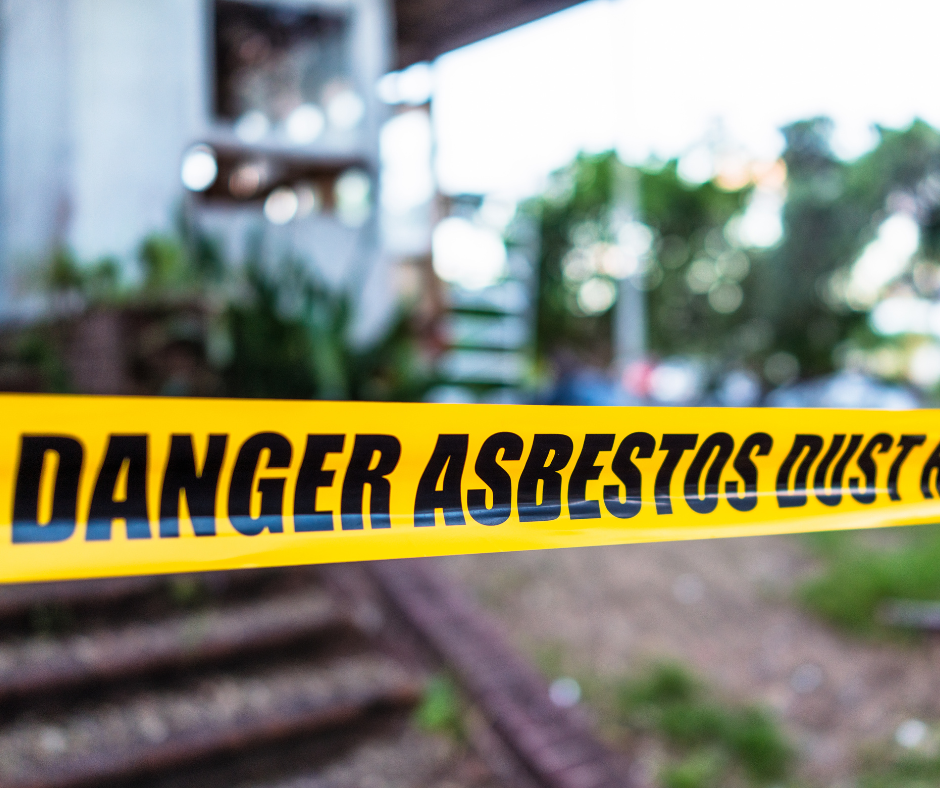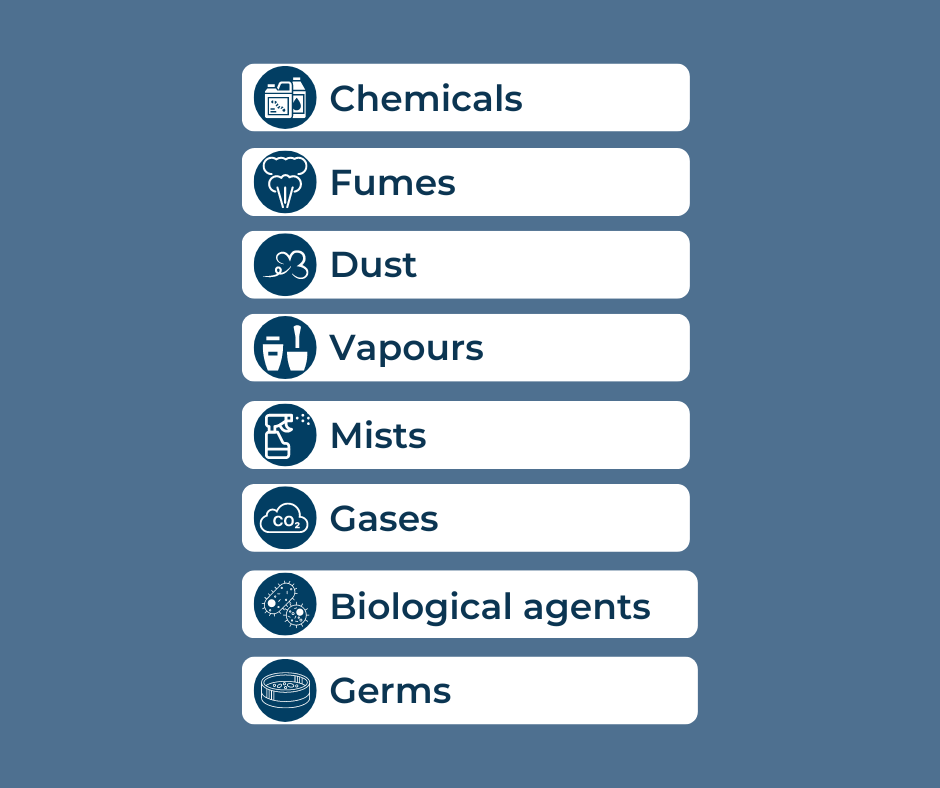As part of February’s Hazard of the Month, Occupational Health, we’re highlighting two key areas: Asbestos Awareness and Control of Hazardous Substances.
Asbestos Awareness
 Asbestos exposure is one of the biggest occupational hazards to workers in the UK, with around 5000 people dying from asbestos-related illnesses every year. These diseases, such as mesothelioma and lung disease, are incurable and can take decades to develop.
Asbestos exposure is one of the biggest occupational hazards to workers in the UK, with around 5000 people dying from asbestos-related illnesses every year. These diseases, such as mesothelioma and lung disease, are incurable and can take decades to develop.
These diseases are caused by inhaling asbestos fibres, which are released when the substance is disturbed. You cannot see, smell or feel asbestos fibres, so without testing it is impossible to know it is present.
If you think you have come across any material that may contain asbestos, you should stop work immediately and speak to your employer, or the building owner, to find out if there is asbestos in the building. The building’s asbestos register or survey should be checked to ensure there is enough information present to do the work safely.
Some trades are more at risk of asbestos exposure – for example, those working on building structures to carry out:
- maintenance or repair
- refurbishment or retrofitting
- demolition
- installation
The risk is further increased if:
- the areas you are due to work in have not been inspected for asbestos-containing materials beforehand
- the people in charge of the work did not pass on information about asbestos-containing materials to you
- you have not received appropriate training to recognise and work safely with asbestos
- the building you are working on was built or refurbished before the year 2000
- you put yourself at risk by failing to follow proper precautions or training
Make sure you and your workers have the tools you need to stay safe when working near asbestos with our Asbestos Awareness Online Course. This course is suitable for any worker who may potentially come into contact with asbestos as part of their job. Get 10% off this course with the code ‘OccHealth10’!
Control of Hazardous Substances
 Employers have a legal duty to protect their workers from exposure to hazardous substances. This includes:
Employers have a legal duty to protect their workers from exposure to hazardous substances. This includes:
- dust
- fumes
- chemicals
- vapours
- mists
- nanotechnology
- gases
- biological agents
- germs
For substances that are classed as carcinogens, mutagens, or asthmagens, exposure must be controlled to as low as is reasonably practicable in accordance with the Control of Substances Hazardous to Health Regulations 2002 (COSHH).
What is exposure?
Exposure is when a substance is taken into the body via:
- skin contact
- swallowing
- injection
- breathing in dust, gas, fumes or mist
The HSE set workplace exposure limits (WELs), which are approved occupational exposure limits put in place to help protect workers’ health. WELs are concentrations of hazardous substances in the air, averaged over a set period of time.
Exposure levels can be checked by monitoring – measuring the substance present in the air that a worker breathes while they are doing a task. This is a useful test to check if your current control measures are effective, as if exposures are below the WEL they are likely to be working.
Ensure that you are following COSHH regulations by learning how to control these substances with our Control of Hazardous Substances Online Training. This course is suitable for both employers and employees who may come across hazardous substances in their line of work. Get 10% off this course with the code ‘OccHealth10’!

Asbestos Awareness and Control of Hazardous Substances training courses are essential tools in protecting the health of your workers. Make sure you don’t miss out on our 10% off deal on these courses, available until the end of February. Simply enter the code ‘OccHealth10’ at checkout to save!
Read more Safety Spotlight blogs here
To keep up to date with the latest health & safety news and advice, follow us on social media:
